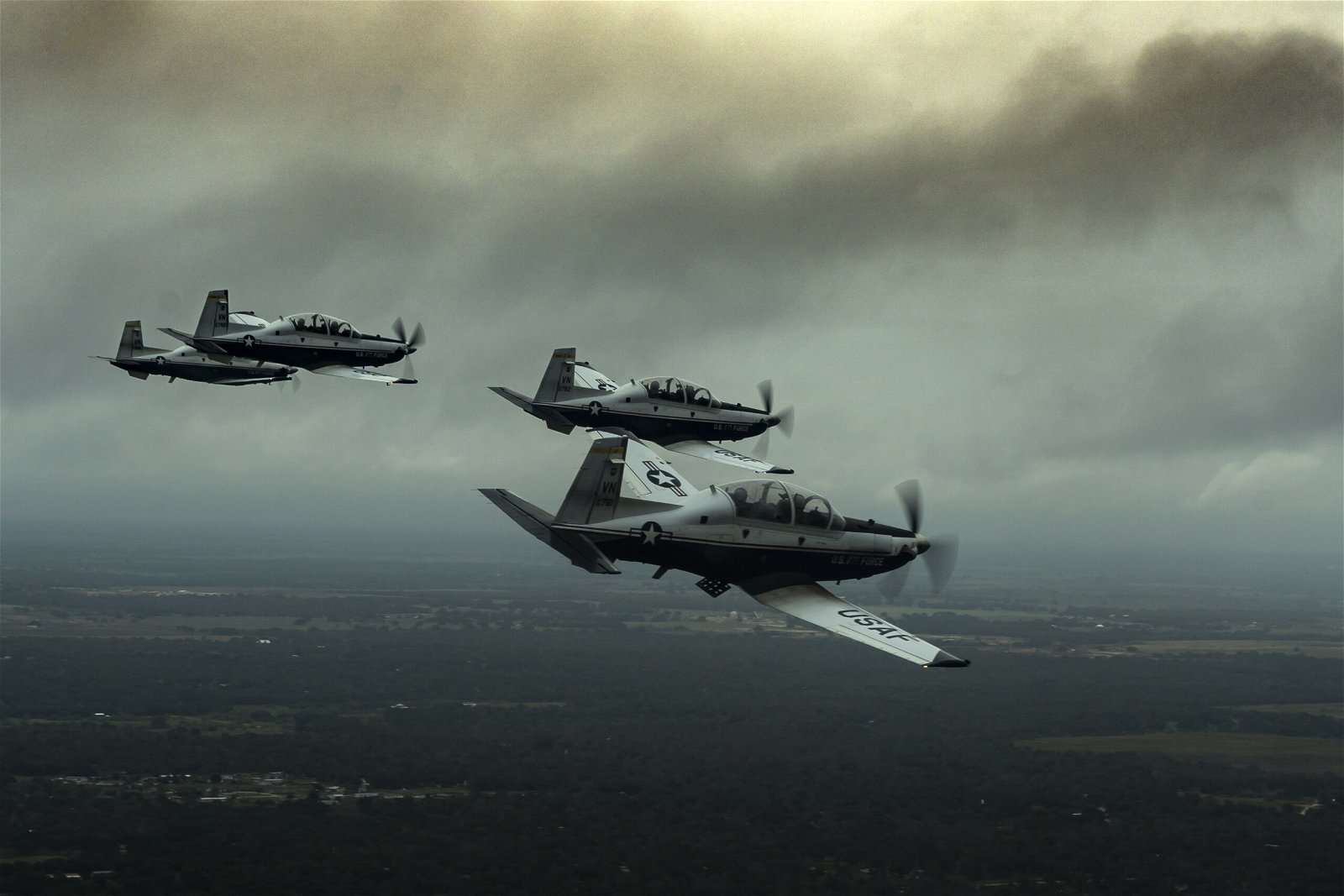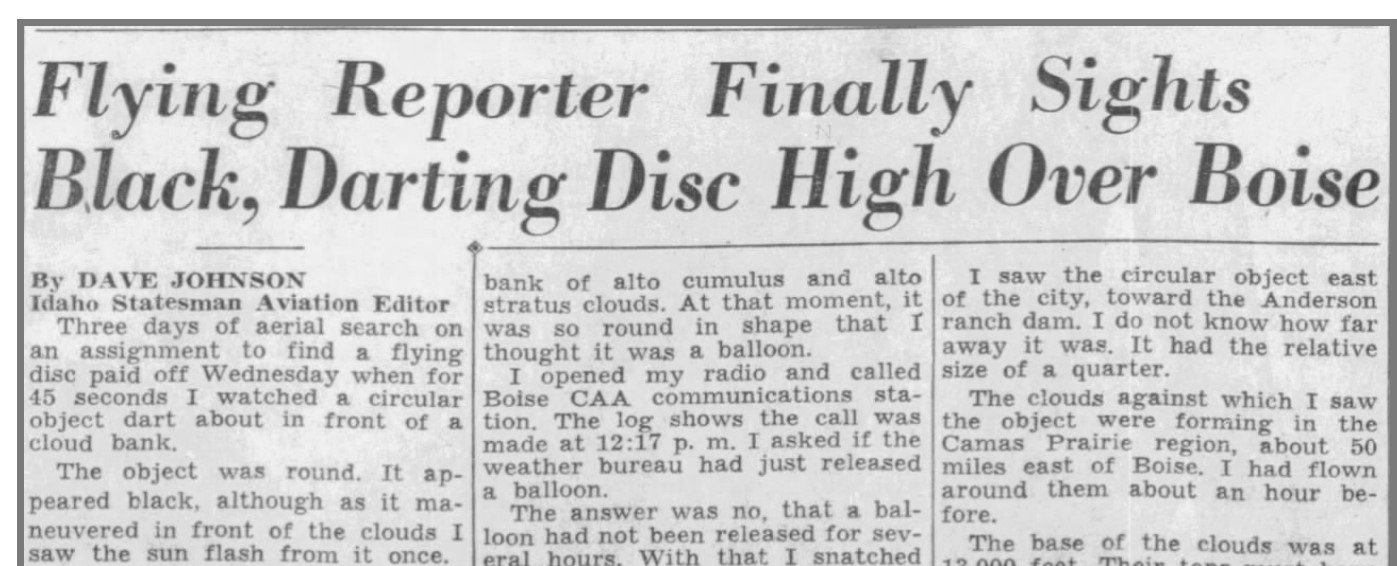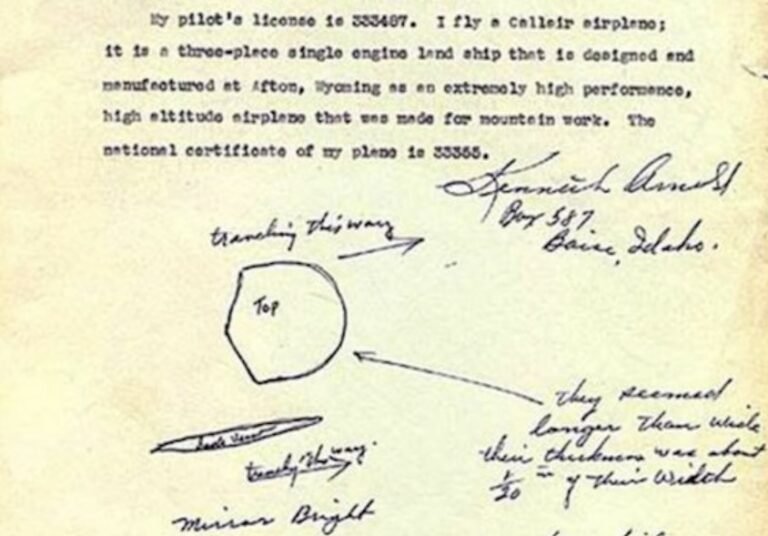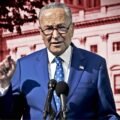Everyone with even a passing interest in the UFO topic is likely familiar with the June 24, 1947 sighting of what later (incorrectly) became known as “flying saucers” by pilot Kenneth Arnold near Mount Rainier, Washington, in the northwestern United States. Arnold had been flying his private plane and conducting a brief search for a recently downed aircraft when he spotted nine objects flying through the same mountainous terrain. He went on to report his sighting to both the media and the government and the rest, as they say, is history. This story has shown up in so many television programs, documentaries, books, and magazines covering the UAP topic that it has become generally accepted as the first UFO sighting of the modern era of ufology. But there are two other aspects of Arnold’s sighting that are far less frequently mentioned and we’ll take a look at those in this report.
The first aspect of this tale is the question of what investigators from the government thought of the veracity of his account and the value of his report. Another part of the story that’s rarely heard involves what happened a few weeks later. An Idaho journalist who was also a pilot and a member of the Air National Guard was sent on assignment to try to verify Arnold’s story and attempt to locate one of these “flying discs” himself. And he did not come back empty-handed.
To document these facets of the story, The Debrief dug deeper into the National Archive records of the Air Force, focusing on the Project Blue Book compilation of documents specific to the Kenneth Arnold sighting. Other contemporary media reports from the period were also examined. Several of these records provide significant additional insight into both the military’s view of the birth of the modern UFO phenomenon and Arnold’s own views on what he saw, as well as the amount of time and energy that mainstream press outlets of the day invested into these stories and the lives of those who experienced such events.
The Air Force Was Not Initially Impressed With Arnold
To use the phrase “not impressed” is clearly something of an understatement. The initial records of the investigation dutifully reported what Kenneth Arnold said and even the drawings of his observation that he submitted. Arnold had seen “a chain of nine peculiar aircraft flying from north to south” which “dipped” up and down around the mountain peaks. He estimated their distance to be approximately 25 miles and their size to be “two-thirds that of a DC-4.” Arnold also reported that he had assumed the objects to be “jet aircraft” of some sort, but that he “couldn’t make out a tail” on the craft.” He also calculated that the craft had to be traveling substantially faster than the speed of sound.
The first responses from government investigators were less than charitable, to put it mildly. Air Material Command at Wright-Patterson wrote of what came to be known as “Incident 17” that “the report cannot bear even superficial examination, therefore, must be disregarded. There are strong indications that this report and its attendant publicity is largely responsible for subsequent reports.” Their examination relied on Arnold’s descriptions of both the size of the objects and the distances at which he claimed to see them. They concluded that both of those metrics would not be simultaneously possible except under extraordinary circumstances.
To be fair, their evaluation was in keeping with our modern understanding of the limits of human vision. Due to the angular resolution of the human eye, the greatest distance at which you could make out details of a plane’s structure without telescopic magnification is approximately 12.5 kilometers or 7.8 miles. For Arnold to have seen an object smaller than a DC-4 and make out the details of the fuselage and the lack of a tail, he would have needed to be less than eight miles away. To see such an object clearly at a distance of 25 miles, it would have had to have been roughly one-half mile across. But given the odds of no one else seeing a group of objects of such monstrous size, J. Allen Hynek eventually concluded that Arnold had merely erred in estimating the distance of the objects. Corrected for a more reasonable distance, the speed of the objects would have been far slower than the supersonic speeds the pilot estimated. Still, Hynek found the sighting to be compelling enough to place “Incident 17” into the 3.b category in the Project Grudge report.
The Assignment of a Lifetime for an Idaho Journalist
While the government was taking a great, if skeptical interest in Kenneth Arnold’s sighting, the media was even more intrigued. In Arnold’s hometown of Boise, Idaho, the Aviation Editor of the Idaho Statesman, David N. Johnson, was tasked with tracking down whatever it was that Arnold had seen and reporting on it. Johnson was himself a pilot and an associate of Arnold. He was also a member of the 190th Fighter Squadron of the Air National Guard, based at Gowan Field, near the location of Arnold’s sighting. According to a sworn statement he gave to the government, he was dispatched to “conduct an aerial search of the northwest states in an effort to see and photograph a flying disc.” He was further told to continue this effort, “for so long a time as you believe reasonable or until you see a flying disc.”
Leaping upon the opportunity of a lifetime, Johnson took a small plane belonging to the newspaper with Kenneth Arnold as a passenger and flew up to investigate the area on July 7, 1947. The flight failed to produce any sightings of unusual craft. The following day, July 8, Johnson, being a member of the 190th Fighter squadron of the Idaho National Guard, arranged to take an AT-6 fighter plane at Gowan Field to continue the search. During a flight covering territory in three states, he still reported seeing nothing unusual. But on July 9th, the third day of the search, Johnson reported an experience remarkably similar to that of Kenneth Arnold.


While flying back toward Gowan Field at an altitude of 14,000 feet, Johnson saw off to his left an object he described as being “black and round.” At first, he thought it might be a weather balloon, so he radioed the Civil Aeronautics Authority (CAA) in Boise to inquire about the possibility but was told that no balloons had been released since early that morning. At that point, Johnson pulled back the plexiglass cockpit cover for a clearer view and took out the 8mm video camera he had brought with him. He pointed it at the object and recorded approximately ten seconds of film. As he lowered the camera, he reported that he saw the object “roll so that its edge was presented to me.” Instead of appearing round, the object then appeared to be “a thin black line.” This suggested that the object was flat rather than round. It then performed a series of erratic rolling maneuvers before the pilot lost sight of it. He radioed in his observations to CAA and landed to refuel his plane. A second flight that day did not produce results.
The Aftermath
David Johnson would later report speaking to three members of the Air National Guard at Gowen Field who told him they had seen a “black object” against the background of the cloud formation where he observed the disk, describing the same erratic motions he had observed. He was also informed that civilians from the United Airlines side of the field had made similar reports, though he did not have the opportunity to speak to them. He quickly worked to send in his coverage to the newspaper and his initial report appeared in the July 10, 1947 issue of the Idaho Statesman under the title, “Flying Reporter Finally Sights Black, Darting Disc High Over Boise.” (Page 1 and Page 2.)
The article created a considerable stir locally, but one obvious question remained. What became of the film footage that Johnson recorded of the disc? The newspaper wasted no time and spared no expense. They sent the film by airmail to an Eastman Laboratories facility in San Francisco for immediate processing. The disappointing result was that the tiny 8mm film had failed to capture anything more than perhaps a faint dot far off in the sky. The following day, on July 11, the Statesman ran a follow-up article under Johnson’s byline titled, “Flying Newsman Learns That Disc Failed to “Take” on Movie Film.” (Page 1 and Page 2.)


Johnson expressed his regrets that his camera had failed to capture a clear image of the disc and the lengths he went to in trying to provide the paper’s readers with conclusive evidence of the unusual flying objects. In his sworn testimony to government investigators, Johnson described the pains he went through in attempting to think of some other, more terrestrial explanation. But he went on to say, “I can not bring myself to the point of thinking I did not see anything. The impression in the moment was too vivid, too realistic, and I knew in the air when I saw that slow roll or barrel roll, that I was not a victim of illusion.”
As for Kenneth Arnold, the same newspaper provided coverage of appearances that he made at local events in the months that followed. At one charity event where he was invited to speak and describe his experience, he again expressed his opinion that, while he could not prove it conclusively, he believed that the objects he saw were advanced jet planes being developed by the U.S. Air Force which had yet to be revealed to the public. It’s rather ironic to learn that Kenneth Arnold, frequently hailed as one of the founding fathers of the modern history of UFOs, never really believed that he had seen a craft from beyond our world.
Conclusions
As far as Kenneth Arnold goes, his story never wavered over the time he was documented as discussing it. While he didn’t personally believe that he had seen anything extraterrestrial, he firmly maintained that he saw something unusual in the skies. It is also difficult to ignore the remarkable similarities between Arnold’s drawings and actual descriptions of the object and the photographs taken by the witness in Incident 40 only two weeks later in Phoenix, Arizona. These similarities clearly caught the interest of J. Allen Hynek and the Project Blue Book team for obvious reasons.
The question of the reports of David N. Johnson is more complicated. Skeptics might argue that Johnson was a newspaperman in an era where flashy headlines were an eagerly sought commodity and he may have simply wanted to boost sales. The film he captured of the supposed flying disc produced no concrete results. The names of the other witnesses he spoke to do not appear in the records, including the person at CAA Boise known only as “communicator Albertson.” No records or transcripts of Johnson’s radio traffic appear to exist today. In that regard, Johnson’s experience could fairly be described as a single witness account with no firm, supporting data.
But at the same time, Johnson was a veteran and combat pilot with more than 2,800 hours of logged flight time. He was a respected journalist and an editor at one of the larger publications in the region. Would he risk his good name and that sort of career, going on the record in sworn testimony to the government to create some sort of fanciful story simply to sell a few more copies? With no further documented evidence in either direction, the conclusion remains up to the reader as always. But this bit of rarely examined history adds a few more pages to the legends and lore of the earliest days of modern ufology.

